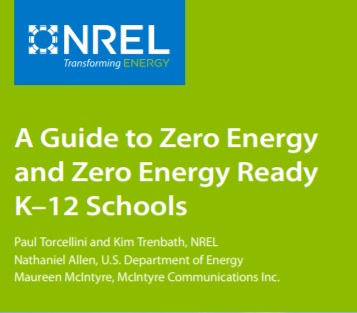
A Guide to Zero Energy and Zero Energy Ready K–12 Schools
Buildings account for nearly 40% of the energy consumed in the United States (EIA n.d.), and reducing that energy use offers many benefits to owners, occupants, and communities. The number of zero energy (ZE) buildings—which are so energy efficient that on-site renewable energy (usually solar photovoltaics [PV]) can meet or exceed their annual energy needs—is growing steadily as the hurdles of getting to ZE are better understood and more easily overcome. Thanks to the focus on energy efficiency during planning, design, construction, and operation, these buildings cost less to operate; provide healthy, comfortable, attractive indoor environments; and can be designed and built on conventional building budgets. The number of ZE buildings in the United States continues to grow. Globally, the ZE buildings market is projected to grow to $78.79 billion by 2025 (Grand View Research 2017a), up from $8.04 billion in 2016 (Grand View Research 2017b).
Interest in getting to ZE is particularly keen among U.S. school districts (Torcellini and Pless 2018a; Torcellini and Pless 2018b). In addition to saving money on energy, a significant benefit for many cash-strapped school districts, ZE schools are living laboratories for students, supporting districts’ highest priority—creating robust learning environments. Schools are generally high-profile buildings in communities and tend to be one to three stories, which helps make ZE an achievable goal with on-site renewables (Griffith et al. 2007).
